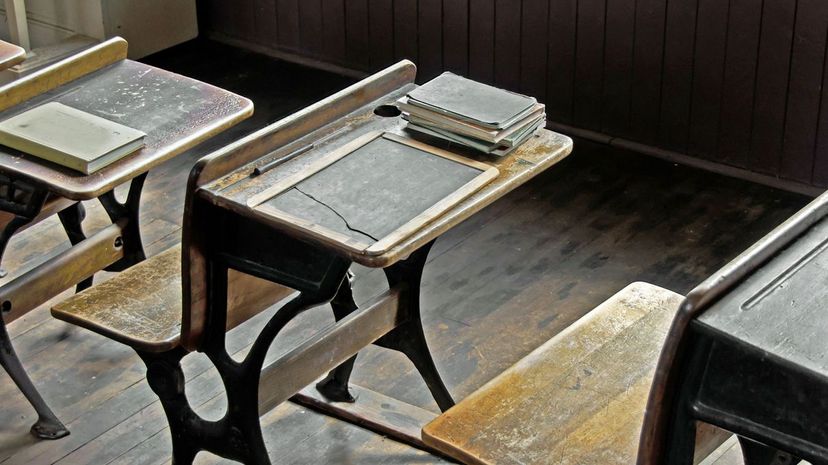
About This Quiz
Schools in America really started expanding their curriculum and importance in the lives of everyday citizens throughout the 1920s. Remember, World War I ended in 1918, which meat a lot of babies were born soon after, many of whom would start school later in the 20s. More students meant a greater need for teachers and more structured schooling as a whole. But there was still a great divide between schools in cities and schools in rural areas. Rural children were far less likely to attend school, and those who did were less likely to attend for long. Many only went long enough to learn the basics before focusing on staying home and working the family farm or business like everyone else.
The '20s were a time of transition in a lot of ways. Between one World War and another and on the cusp of the Great Depression, there were a lot of advances and new ideas. However, a number of old ways hadn't been fully phased out. That reflected in a lot of the supplies children had access to in schools. Affluent schools had much to offer. Many rural schools still taught every grade in a one-room building with only the most basic tools. So let's see how well you know your school history. Take the quiz!

A slate was just a little personal-sized blackboard that a student could write on, often to answer a question or work out a math equation. Obviously, the main problem was that there were no permanent notes kept if you had to write on one.
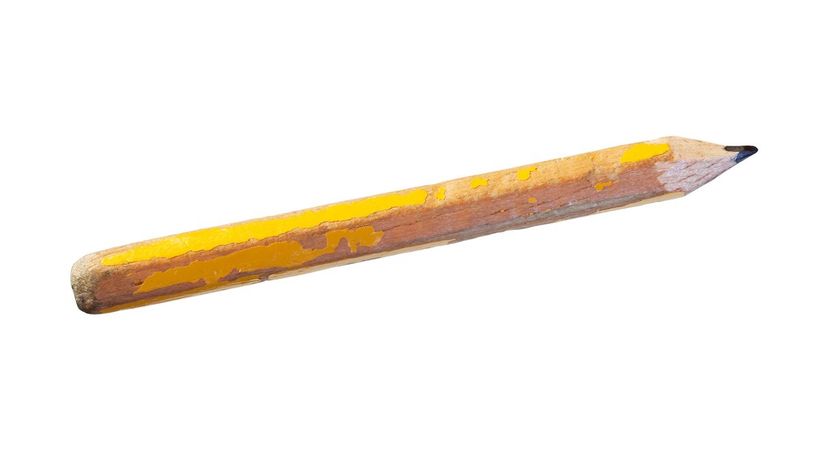
Pencils are the evolution of the writing stylus, which was sometimes as simple as a feather. Because graphite is such a brittle metal, it was encased in wood to make it easier to use without making a mess on your hands. Graphite was a superior choice to actual lead because it makes a darker mark. Also, it's not toxic, which is nice.

Chalk has been mined since the 19th century and it's still mostly the same calcium carbonate today that was mined back then, although these days it could be some other minerals as well. Back in the '20s, it was pretty much necessary for use with a slate.
Advertisement
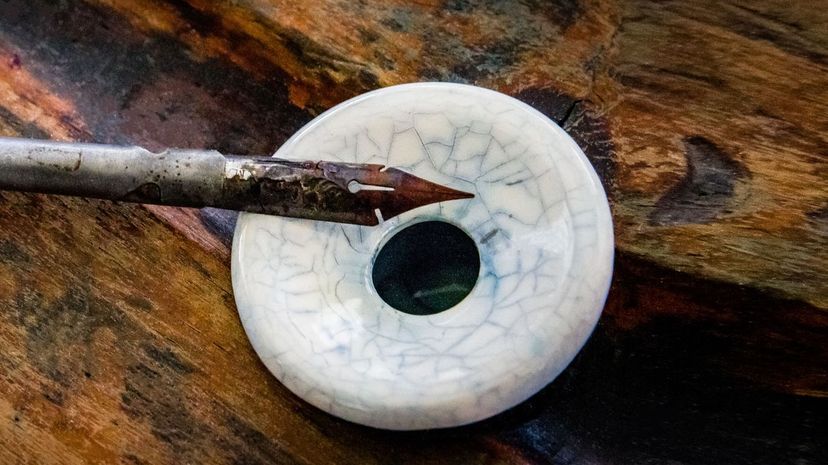
These days we're a little spoiled with our ballpoint pens and gel pens and whatever other pens we have. Back in the day, you had a quill or a fountain pen that needed to be regularly dipped in ink. Where'd that ink get stored? In the ink well on the end of a student's desk.
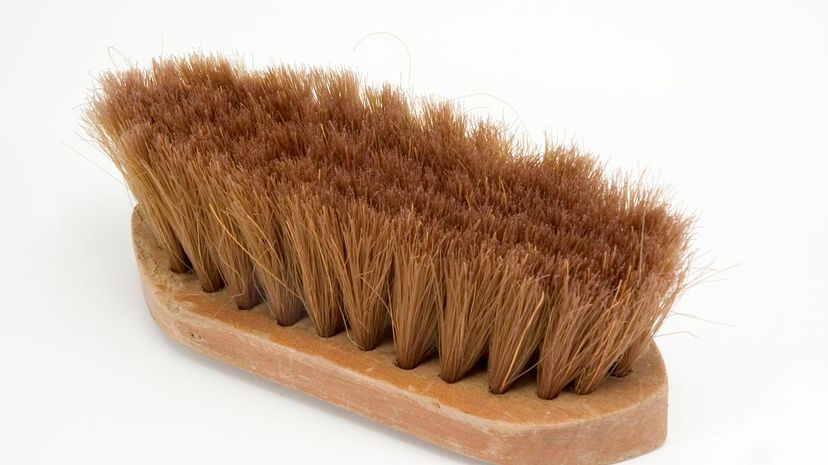
If you have a classroom full of kids writing on slates with chalk, then they're going to need some eraser brushes to clean them off. They're the same today as they were back in the '20s for the most part, just a block of felt with a wooden back to grip.
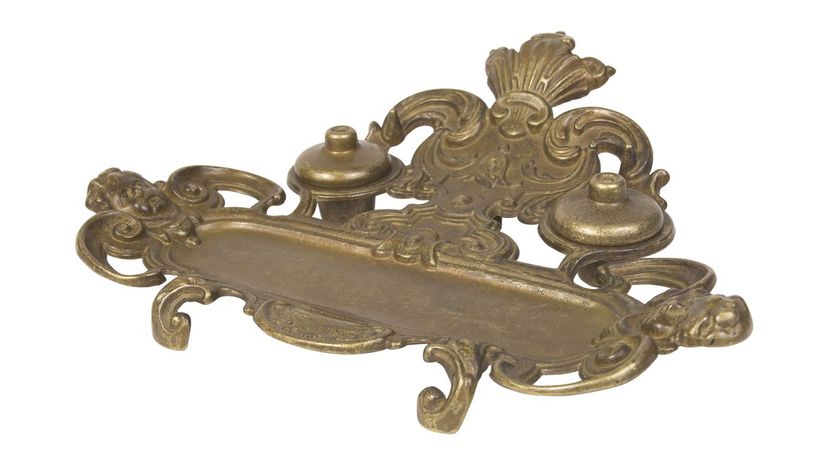
An inkstand was a formal writing kit of sorts that featured a stand, of course, along with an ink well and a holder for your writing instruments like fountain pens and quills. A sand shaker was part of the stand as well, which could be used to help the ink dry a little faster.
Advertisement
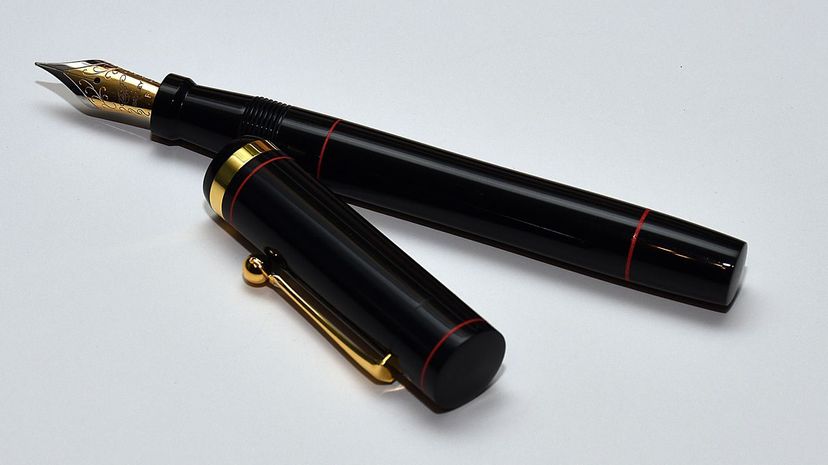
Fountain pens were the evolution of the dip pen, which was essentially any pen-shaped instrument you could dip in ink and use to write for a while. Older fountain pens had to be filled with droppers, but technology in the '20s had advanced to the point where ink could be drawn into the pen faster and more efficiently.
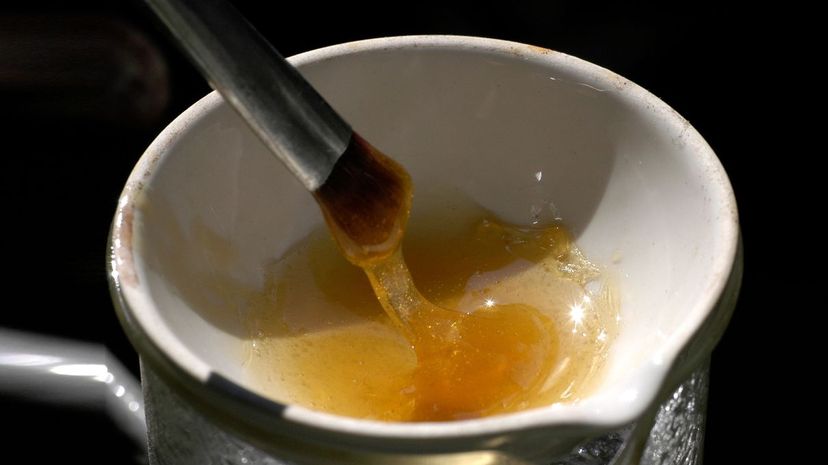
School glue is ubiquitous these days, and most everyone knows Elmer's white glue. However, that wasn't invented until the 1930s. Prior to that, glue was made from animal by-products, sometimes fish bones or ground bone meal in a process not unlike how gelatin is made.
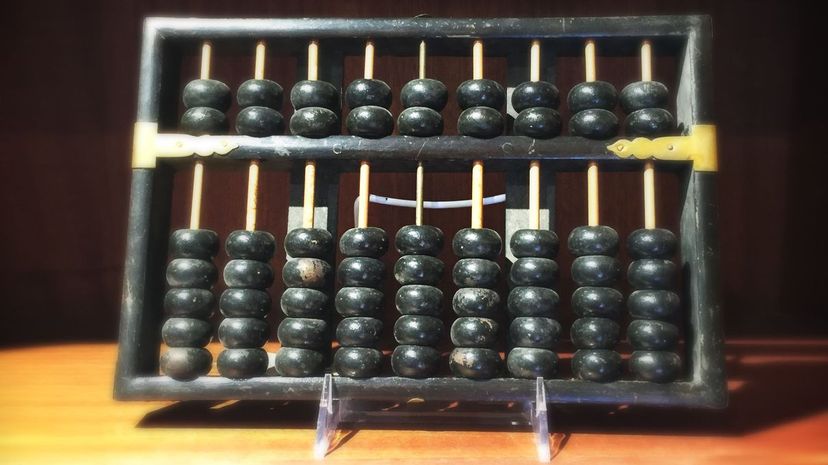
Mechanical calculators barely existed in the 1920s, and those that did were more for office use, not school. That means kids still had to use an abacus. The basic design is a frame with beads on rods that represent different numbers. You could use it for simple counting or complex math equations, including fractions and square roots if it's the right kind of abacus.
Advertisement
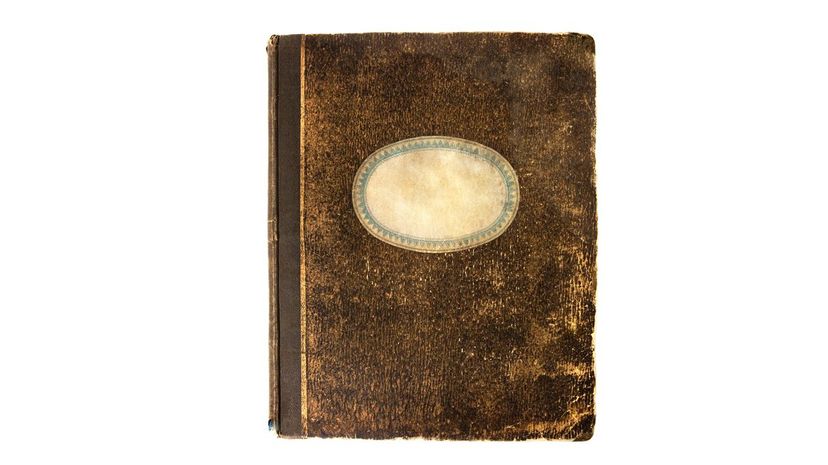
Composition books were simple notebooks not unlike the workbooks you can pick up from any store today: lined paper and a glued binding with a somewhat thicker cover to protect the pages inside. Sometimes a design is so perfect it doesn't need to change.
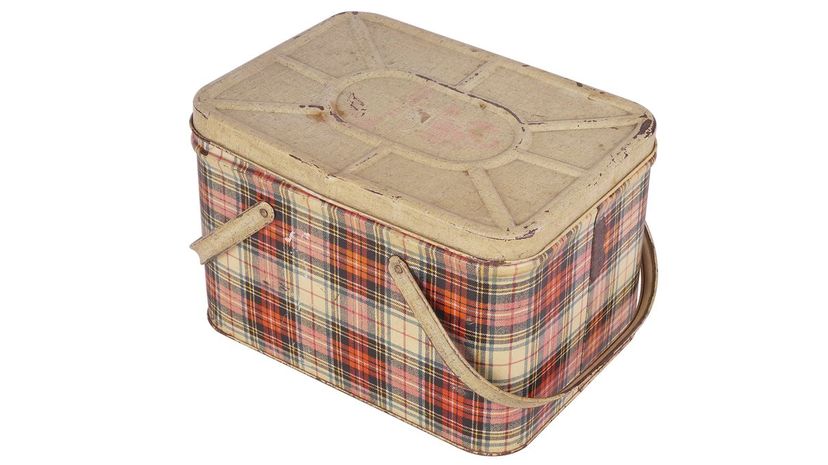
Kids were spending all day in school, plus potentially a solid hour of walking there and back, so a lunch pail was a necessity. Remember, rural schools didn't usually serve lunch in the 1920s, so you needed to bring your own food. Around this time large, metal lunch boxes began to appear more regularly as well.
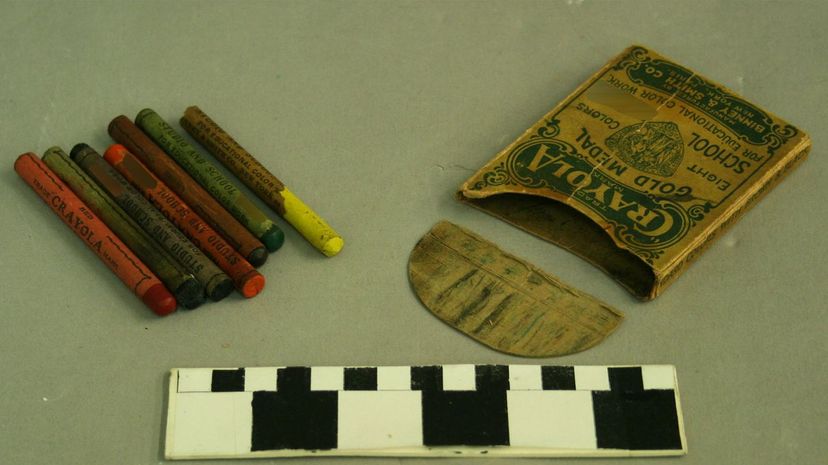
Crayons in one form or another are remarkably old. Even the ancient Greeks knew how to mix wax and pigments. Crayons, as we know them today, have existed for a long time as well. Crayola, for instance, has been making them since 1903.
Advertisement
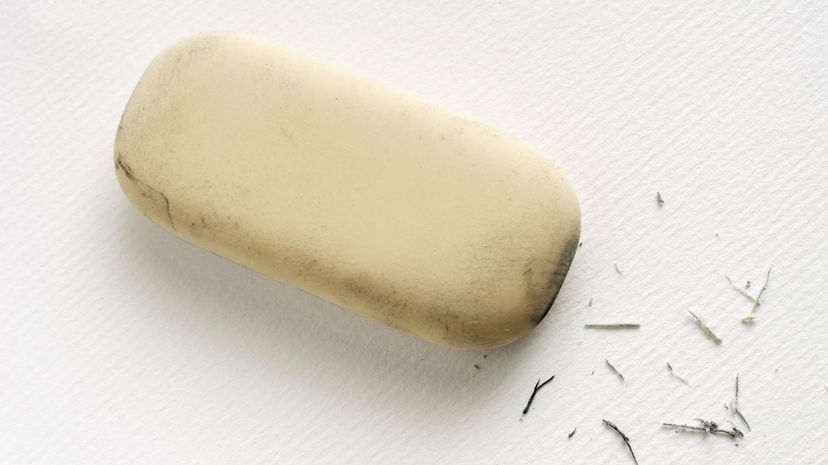
Erasers made of rubber are some of the most common kind you'll find today, but old ones could have been made from wax or even sandstone. Some say bread crusts were even used in Japan, because the world is a weird place sometimes.
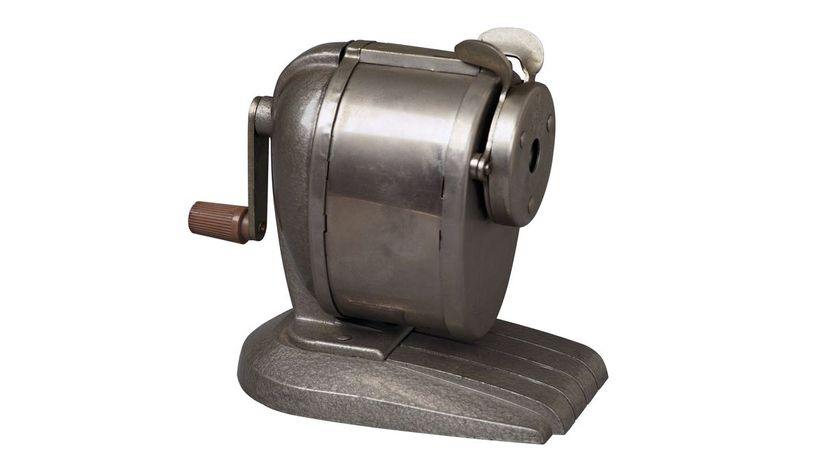
Pencil sharpeners are a pretty important half of the whole pencil equation. At one point you just had to whittle them to a point until the advent of mechanical, hand-cranked sharpeners. Most classrooms had one mounted on the wall or a teacher's desk
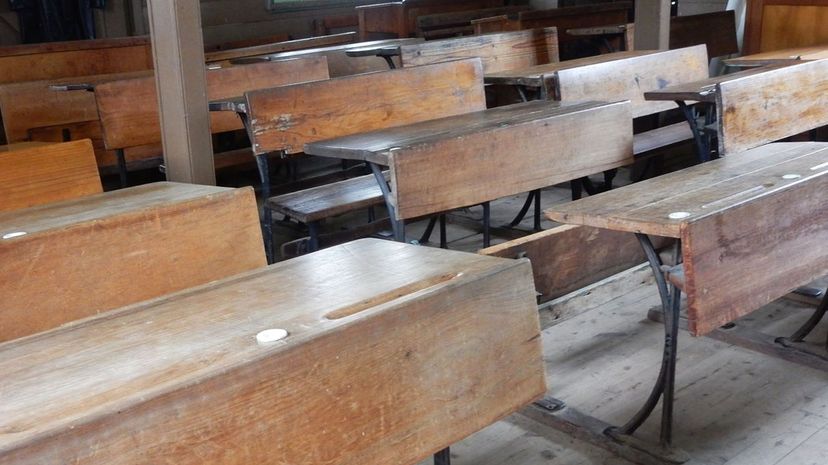
Desks are pretty standard for any school classroom. Today it might just be a chair at a table. Back in the '20s, there were curious desks where the seat of your desk had a high back that bent backward to be the desktop surface of the student behind you.
Advertisement
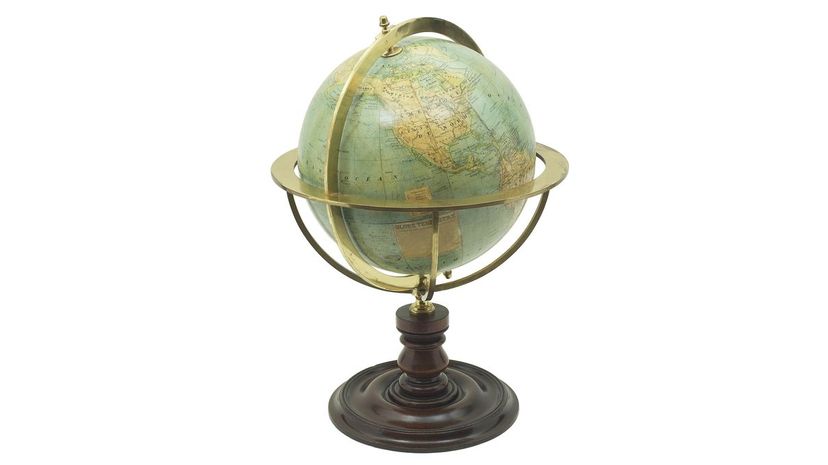
Globes can be simple and plain designs today, but they were a little more ornate back in the day. You average classroom globe in the '20s likely came on a heavy and decorative cast iron base. Any teacher's desk in the '20s would have been naked without one.
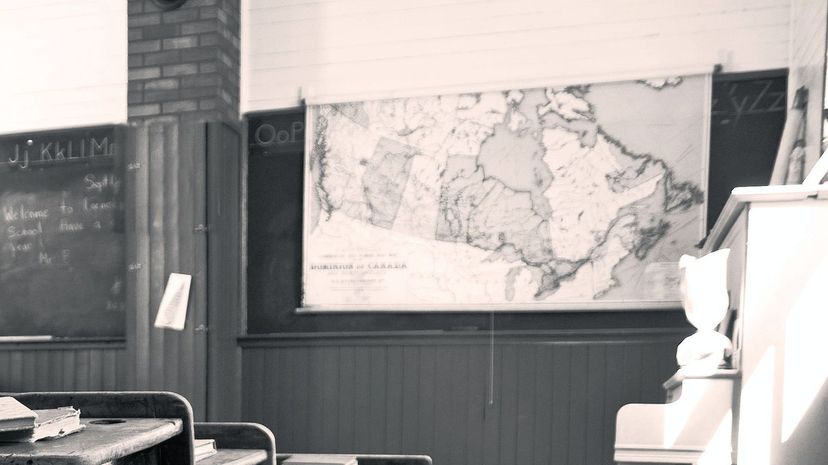
Once upon a time, every classroom in the land had at least one pull-down map rolled up above the chalkboard at the front of the room. A map of the world and a map of the country were standard, but a geography class might include maps of other lands as well.
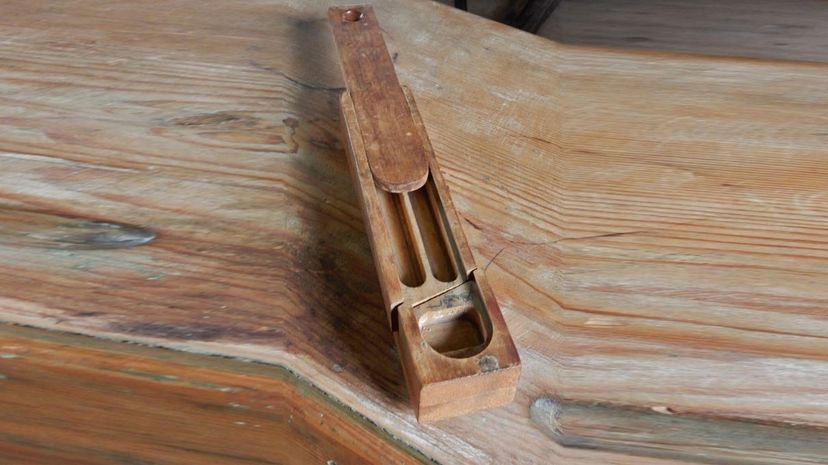
Nowadays most students are using soft-sided pencil cases, but a pencil tin was all the rage back in the day. You can still find vintage ones on Etsy or eBay if you have a hankering to experience old-school school.
Advertisement
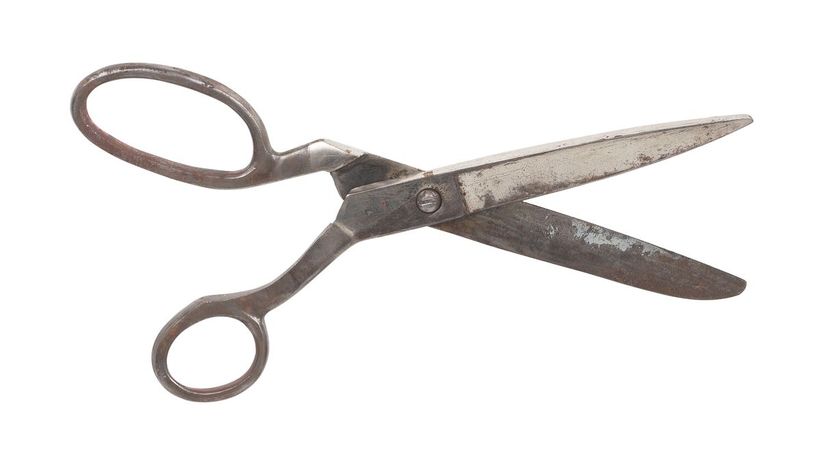
Scissors are an ancient tool dating back 4,000 years in Mesopotamia. School scissors have been necessary about as long as paper has been a part of schooling, but fortunately, someone invented blunted safety scissors to stop kids from cutting themselves as often.
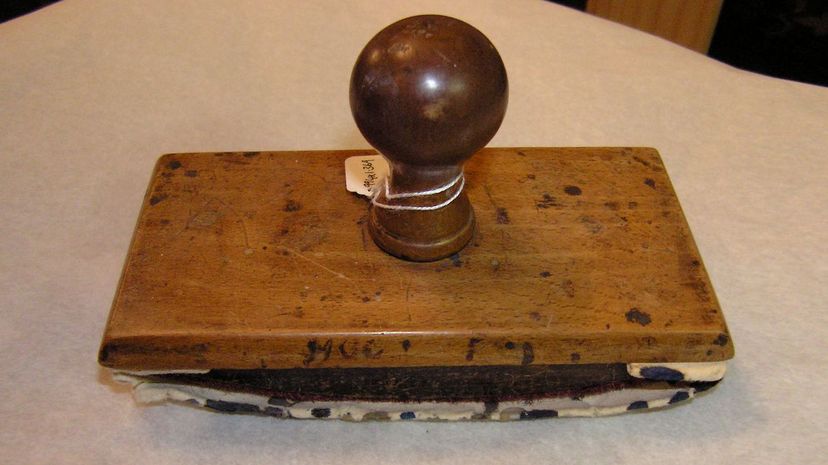
An ink blotter was necessary for anyone writing with a fountain pen. For a wooden rocker-style blotter, a piece of blotting paper was attached, and you could just gently rock the paper across the ink to soak up the excess and prevent smearing.
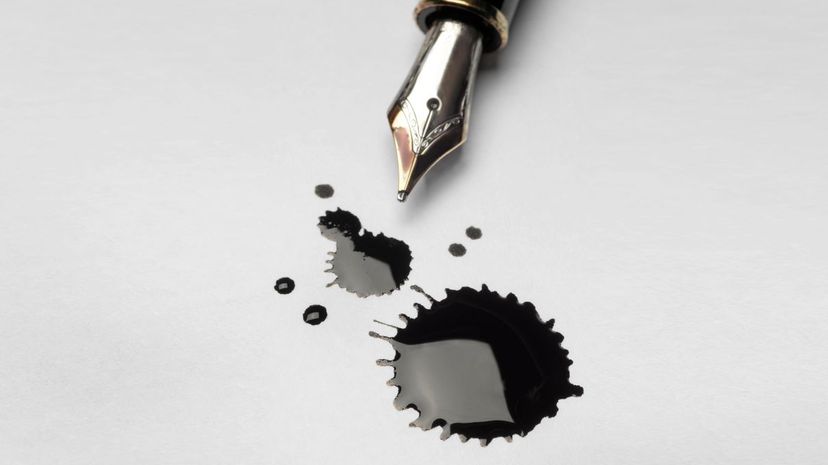
You can't use a quill or a fountain pen without writing ink because, well, what would you be writing with? Ink has existed for many thousands of years, and the simplest forms have just been soot and water mixed together. Modern ink is made of black carbon particles with solvent and polymers mixed in.
Advertisement
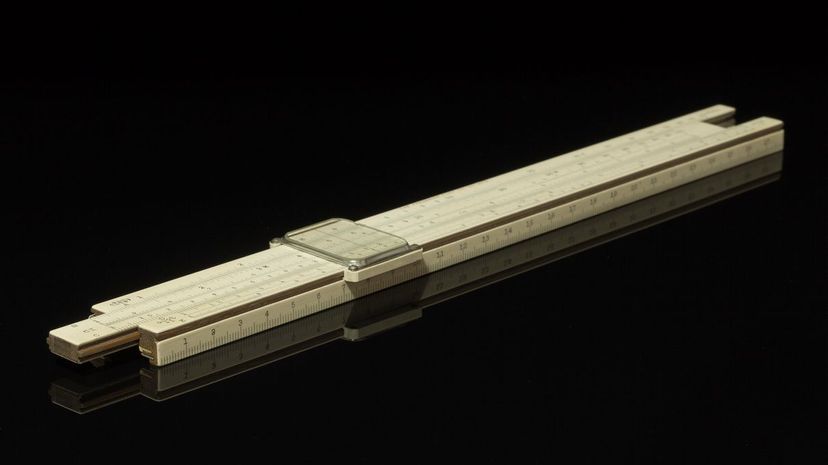
A slide rule is something you don't often see today, but it was a handy tool not just as a ruler but also a math aide. Sliding one part of the ruler to line up with another piece of the ruler could allow you to solve simple math problems.
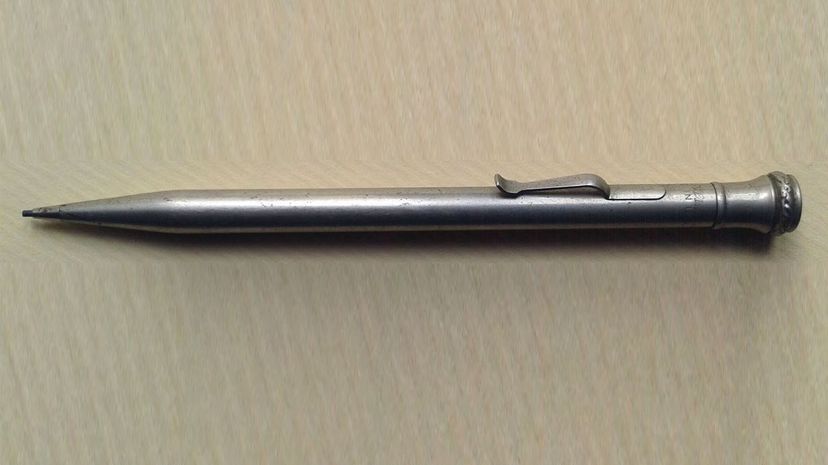
Mechanical pencils seem like they might be fairly new technology, but they're remarkably old and were made for the same purpose as wooden pencils — to allow someone to write without getting their hands dirty with pencil lead. The "Eversharp" mechanical pencil was a huge seller in the '20s.
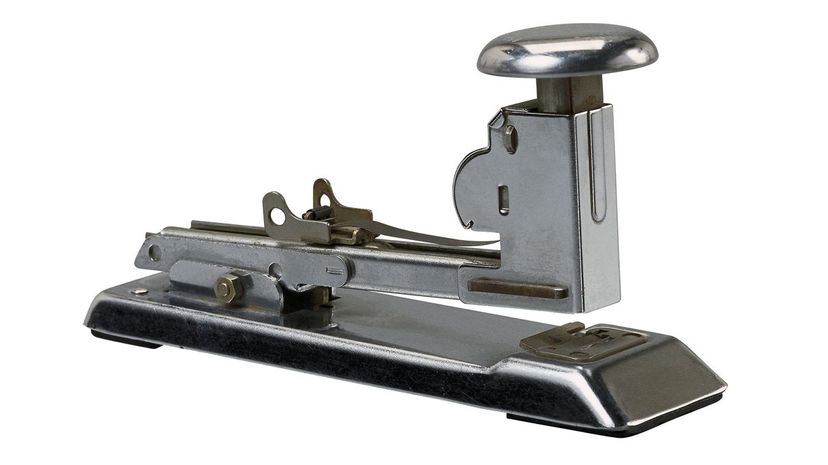
In the '20s a teacher in a nicer school might have been using what was called a clipless stand machine, which was an early stapler-like device to fasten papers together, or a single-stroke staple press. In 1926, the Pinzit machine pushed straight pins through a stack of papers.
Advertisement
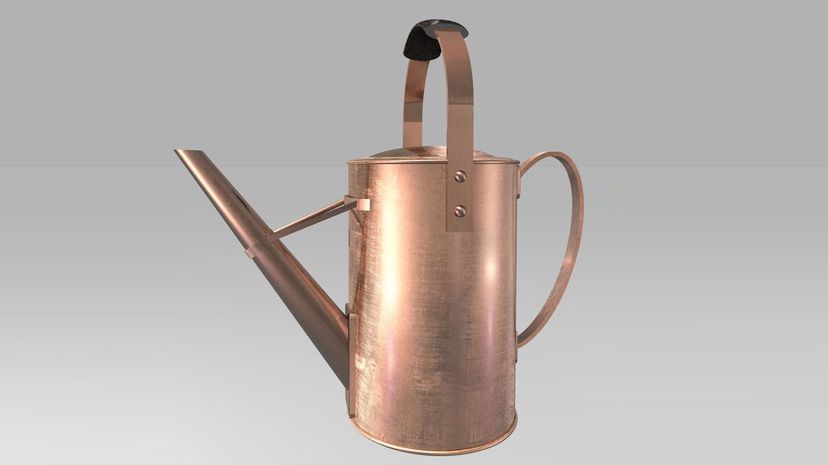
Those tiny ink wells on desks were not disposable, so when they ran dry you had to refill them from a main ink jug or container. A copper ink pourer with its toucan-like spout was just the thing to pour it accurately and neatly into an inkwell.
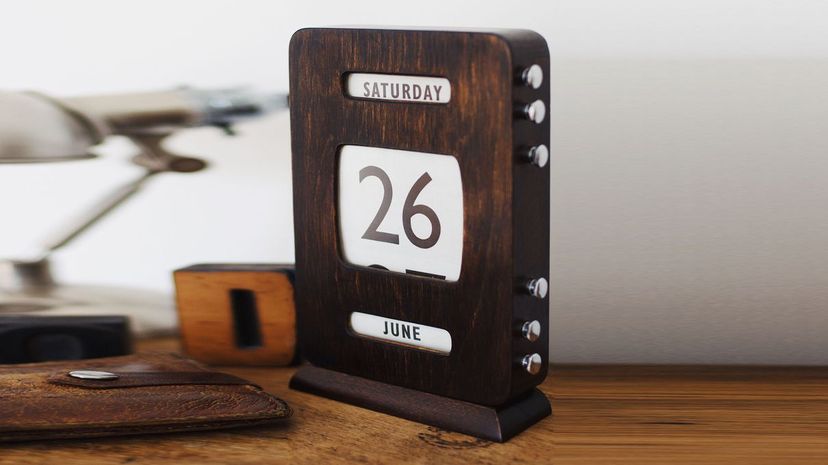
A handy desk calendar is a staple of any classroom. In later years wall calendars were more in fashion but in the 20s a desk calendar that could be changed to fit any year without having to be thrown away was, of course, a much more reasonable option.

Carbon paper was a useful supply on the administrative side of things back in the day before photocopiers and printers made it much easier to have multiple copies. A simple sheet of carbon paper allowed you to write or type on a piece of paper and have the carbon imprint an identical copy on a second sheet below. It's still occasionally used for hand-written receipts in business.
Advertisement
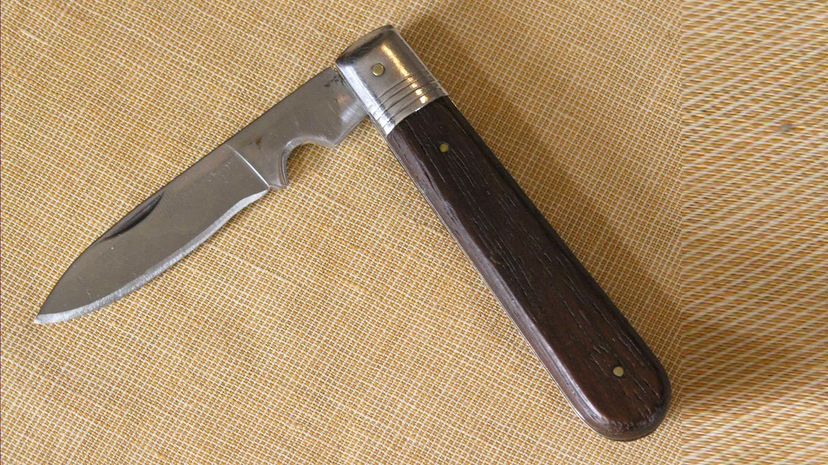
Even today we can make mistakes when writing in ink, so having an ink eraser is an important tool. Before chemical erasers or Wite-Out were options, the paper had to be scraped clean with an ink eraser knife or similar scraping device.

If you want to put some loose-leaf paper in a binder today, you might use a three-hole punch to do so. In the 1920s, hole punchers were less used for binders, since most students didn't have such things, and more for binding papers with corner ties or for being secured on certain kinds of ledgers.
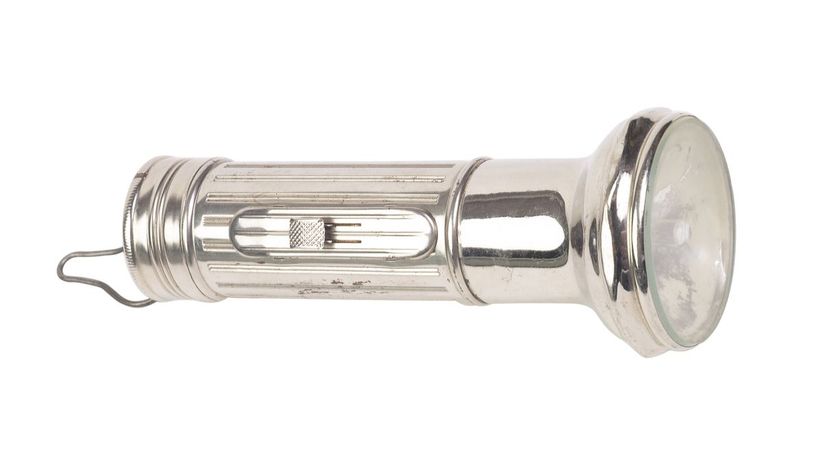
Call this the precursor to the pocket protector. A pocket clip was secured into your breast pocket by a little clip while your pen or pencil was held firmly in place so you wouldn't have to worry about carrying a pencil case or maybe having a pen leak in your pocket. You could buy one for 10 cents in 1920.
Advertisement
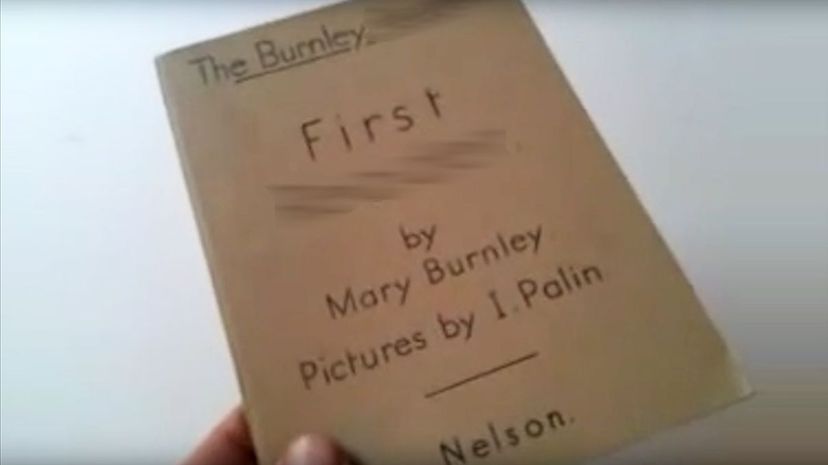
Readers were some basic graded primers for school children that taught them how to read and were essentially simple textbooks to teach the subject with fairly simple stories. If you've ever heard of "Dick and Jane" or "See Spot Run", then you're familiar with the idea.

Take a look at some old-timey photos of children at school, and you'll see students carrying their books over their shoulders tied with leather straps around them. Before school bags became the norm, these straps were the most common way to carry books.
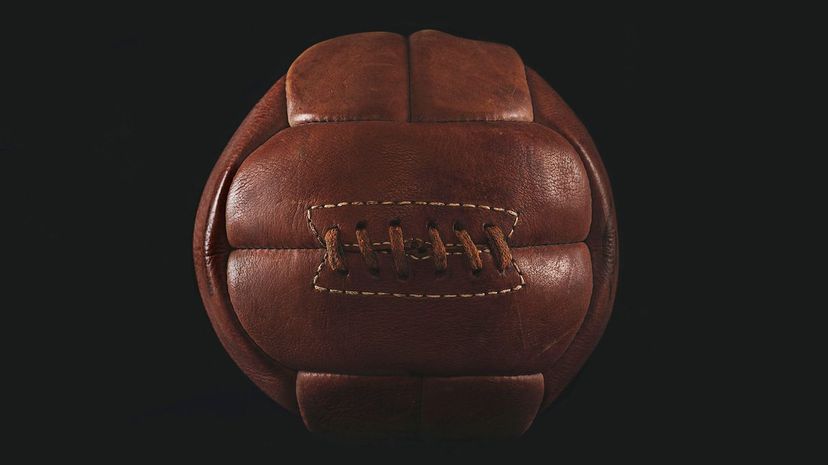
So maybe no one needed this to learn anything, but a ball was as important to kids in the 1920s as it is to kids today. For getting exercise, for having fun, for learning teamwork and every other reason you can think of, a ball is always important.
Advertisement
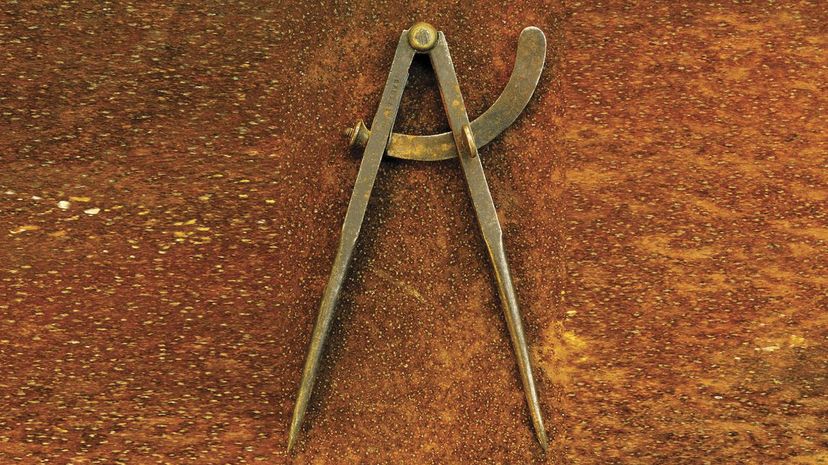
A compass is still a tool you'll find in modern math kits and is needed for drawing precise circles. Place the point in the center of your circle and a pencil in the other arm spins around the center point to draw it perfectly every time.
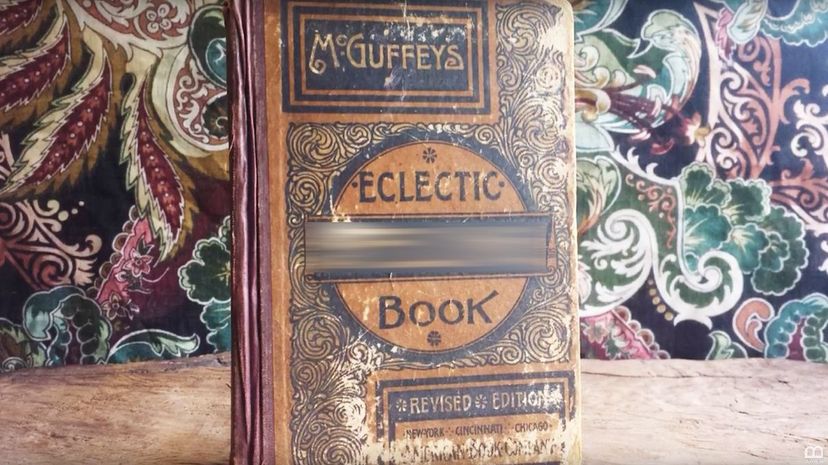
Anyone learning to read and right needed a spelling book like "McGuffey's Eclectic Spelling Book," which was a standard school text in the 1920s. It covered the basics of the English language, including the alphabet and all the parts of grammar.
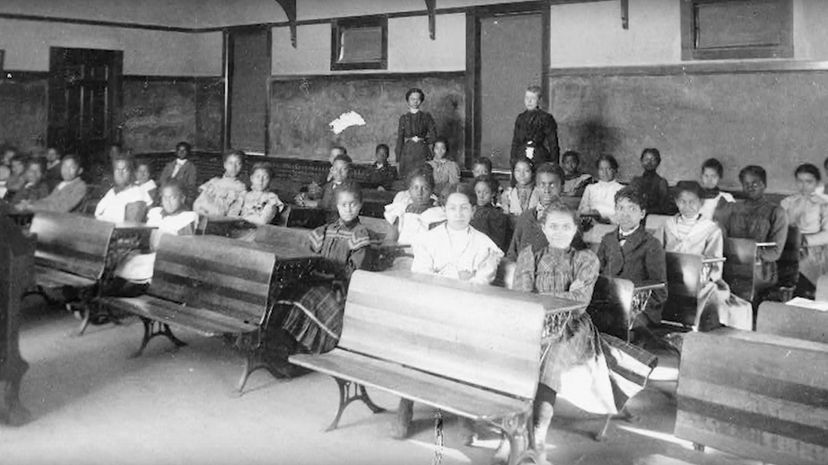
A recitation seat looked a lot like a pew you might find in church and could come in a variety of lengths to accommodate varying numbers of students. They were called recitation seats because they were suggested for classes in which students needed to recite rather than write things.
Advertisement
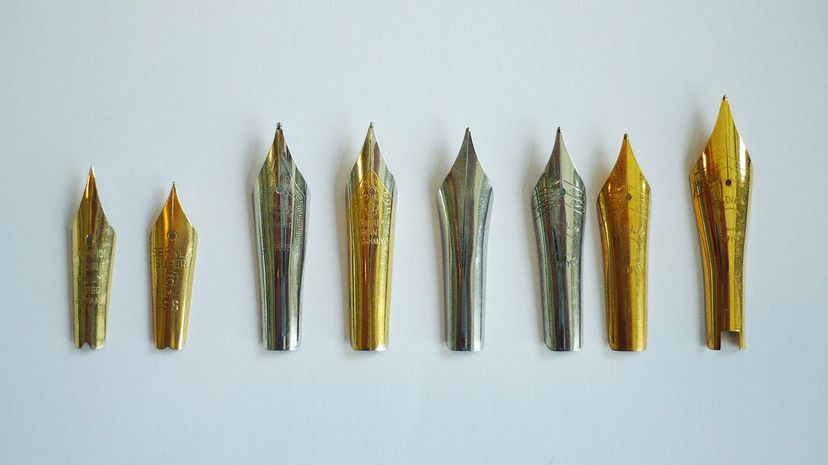
The nib is the removable end of the fountain pen through which the ink flows, and you're able to actually write things out on the paper. Early ones were made of copper or bronze and date back centuries.
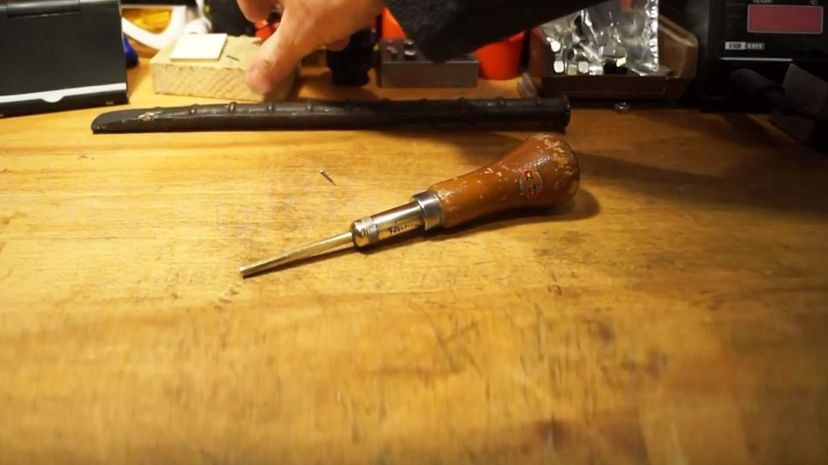
By the 1920s this would have been a rare but not unheard of tool to find in schools. Pushpins or thumbtacks were made to replace the need to use this tool, which was used to push straight pins or needles into boards to hold things in place.
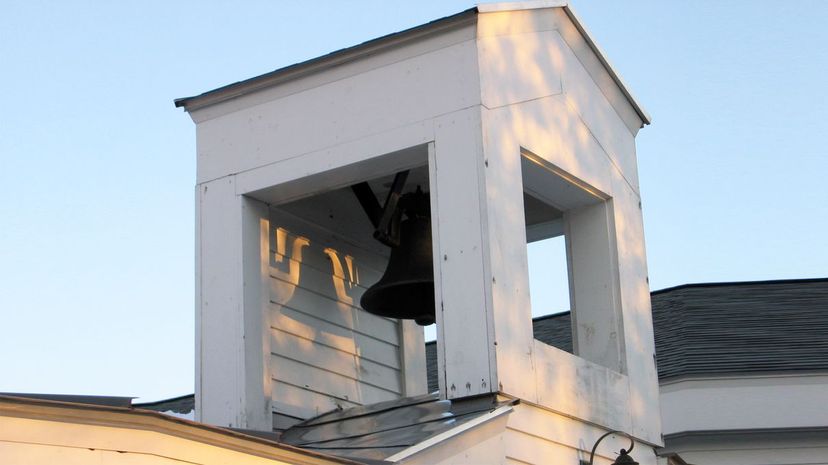
OK, so students didn't need this as a school supply, but the school certainly did. Stores like Sears actually used to stock school bells. A 20 inch, 165-pound bell would cost you $13.37. You could get one that weighed over half a ton for just over $100.
Advertisement

Mechanical pencils have been pretty much the same for over a century now, and from way-back-when until the present day, the key to making it work is to actually insert the lead into them. These days it's graphite, but back in the day lead was also an option.